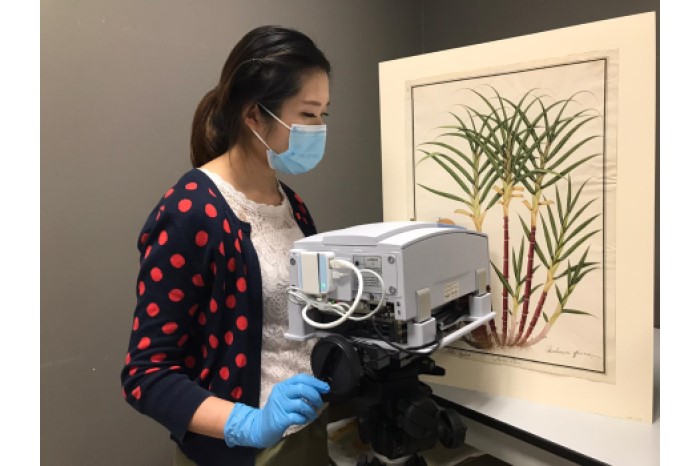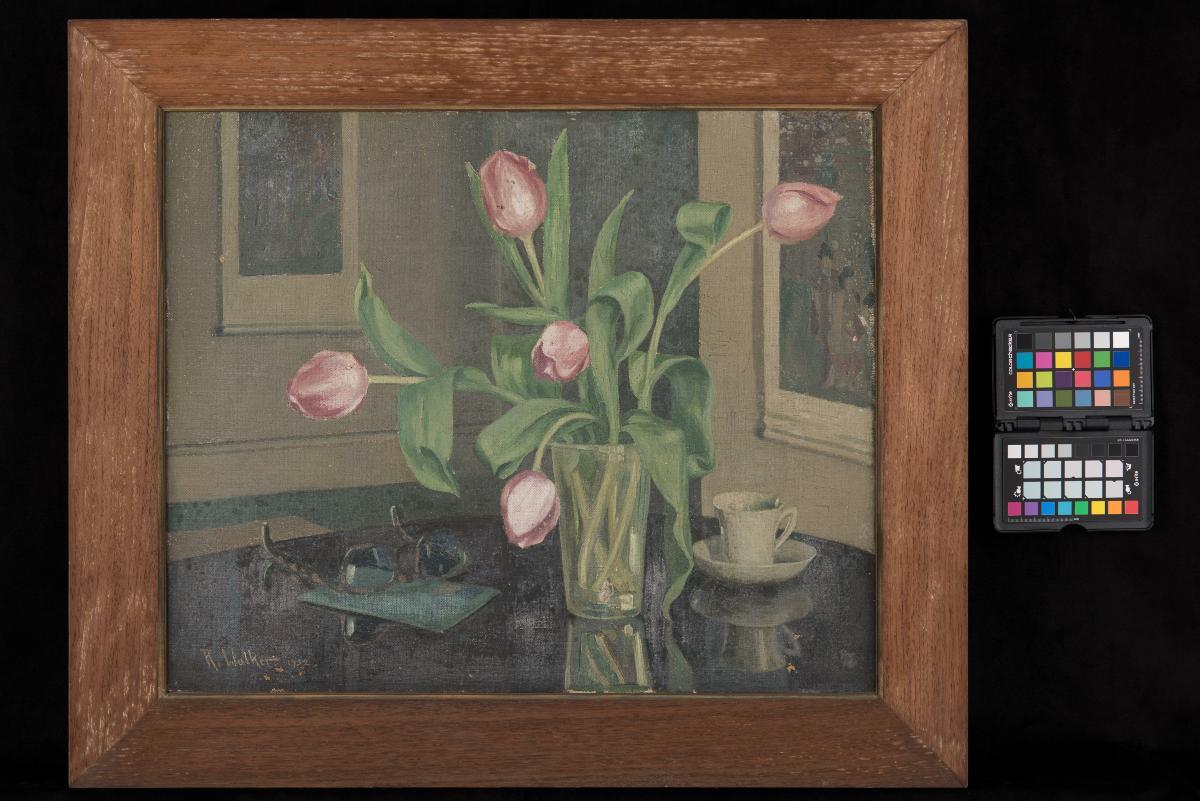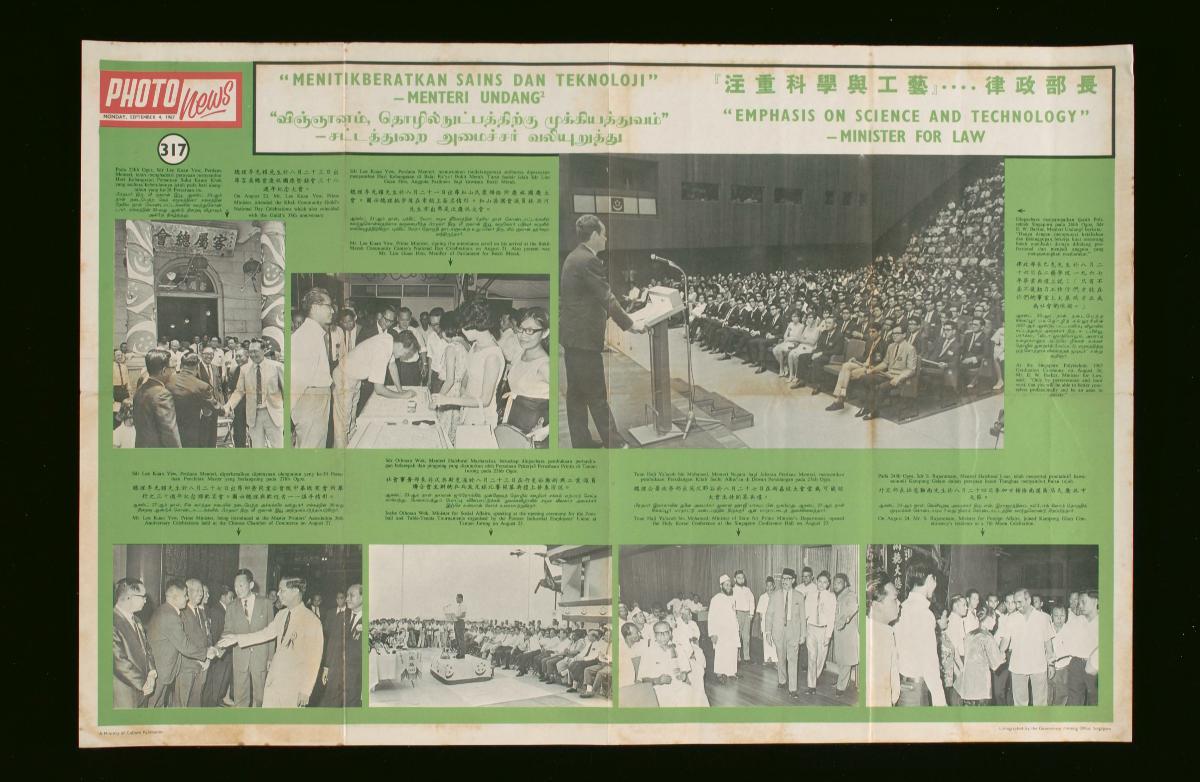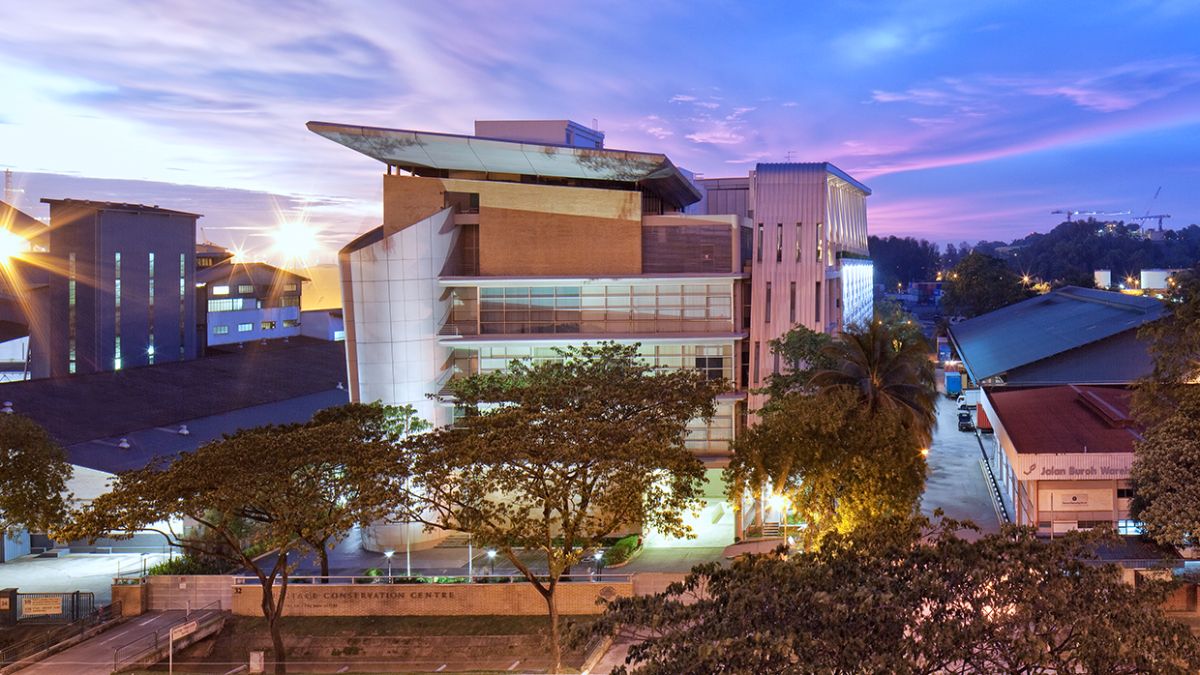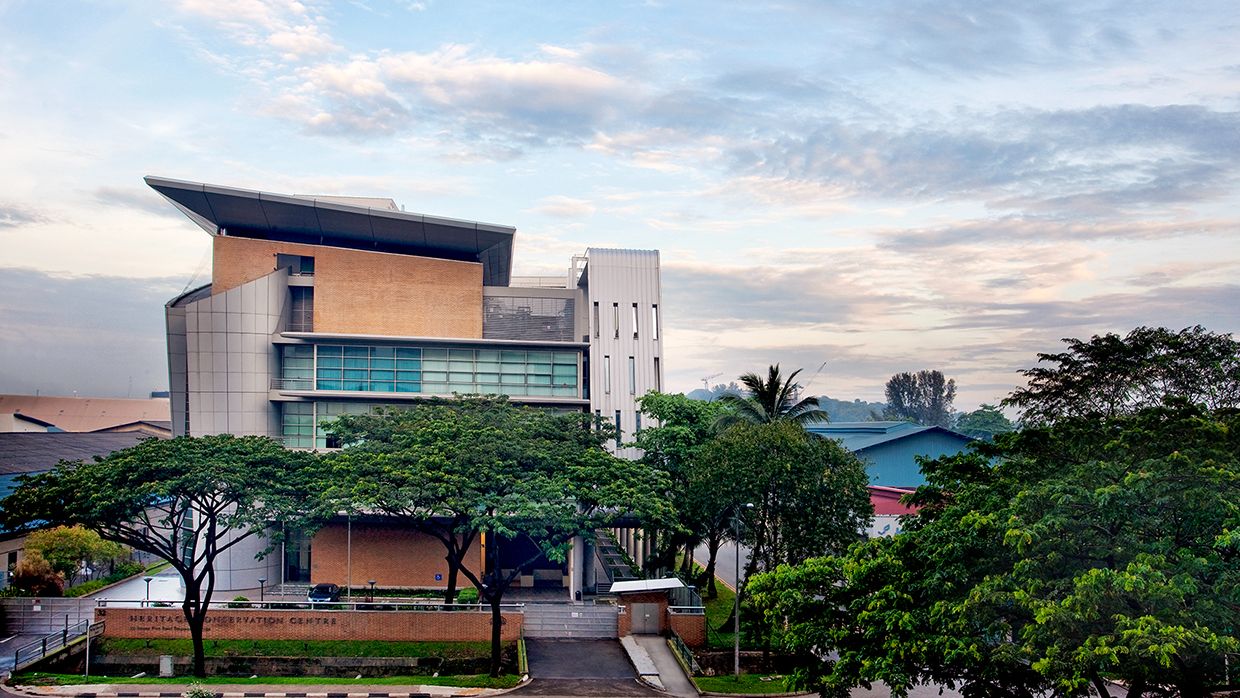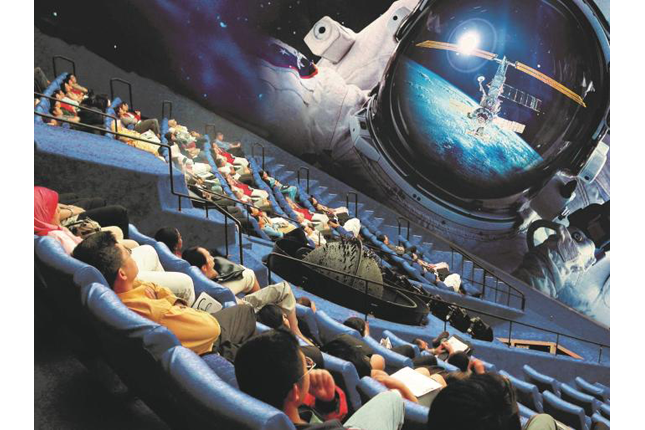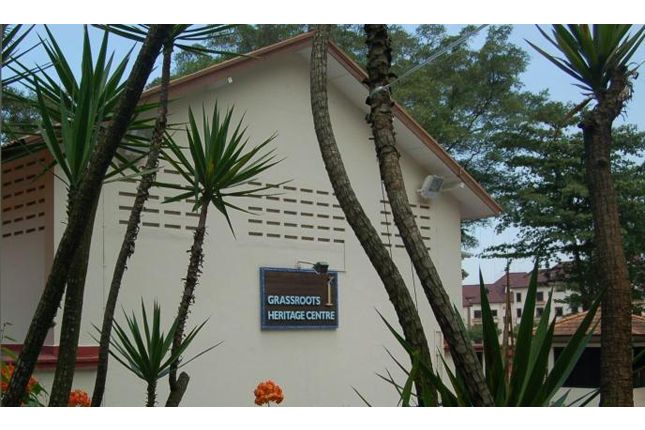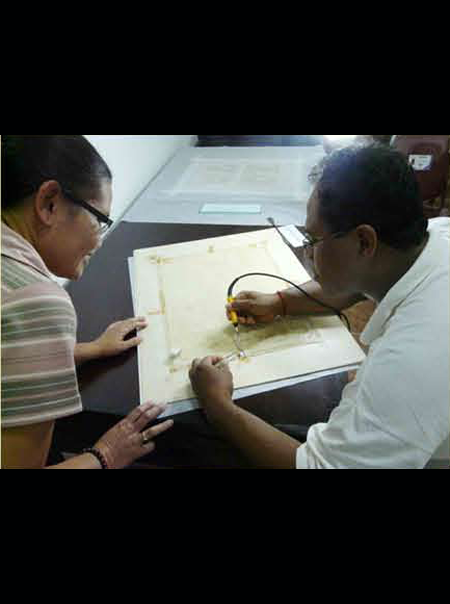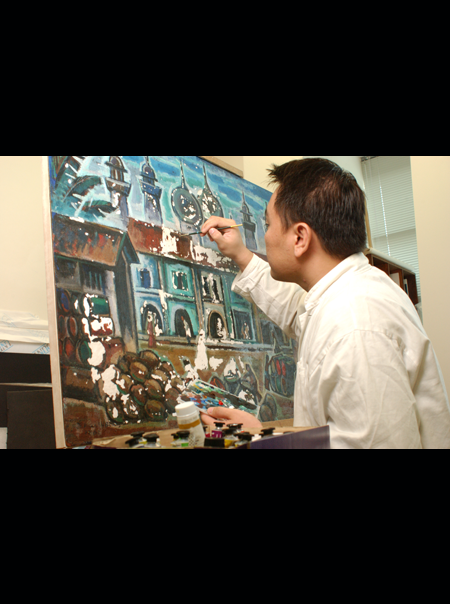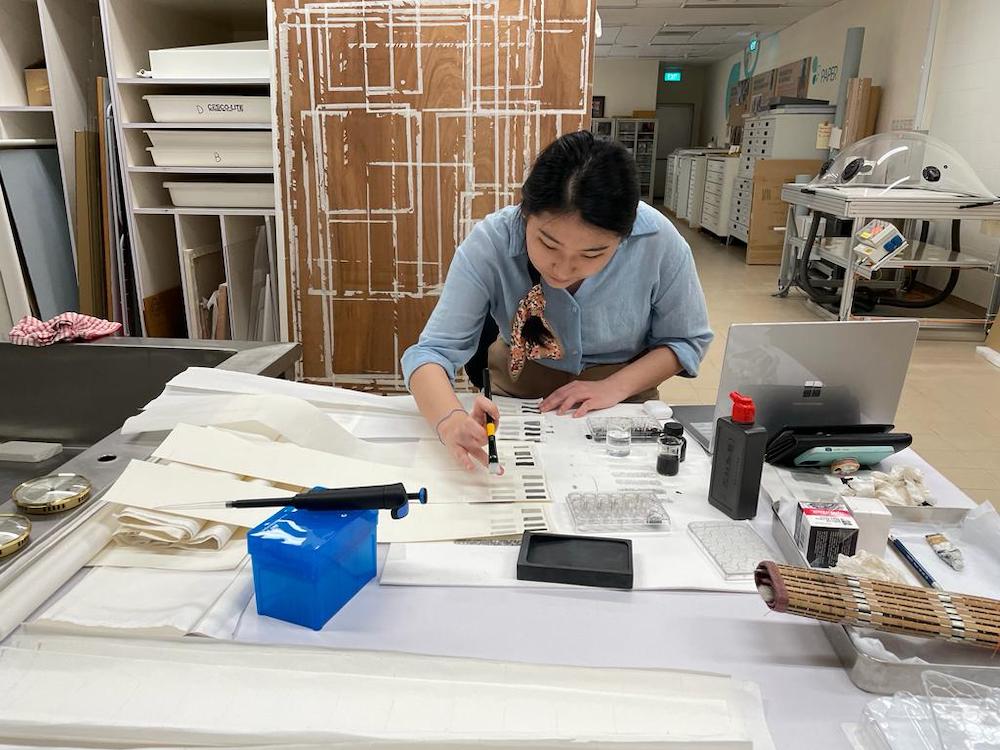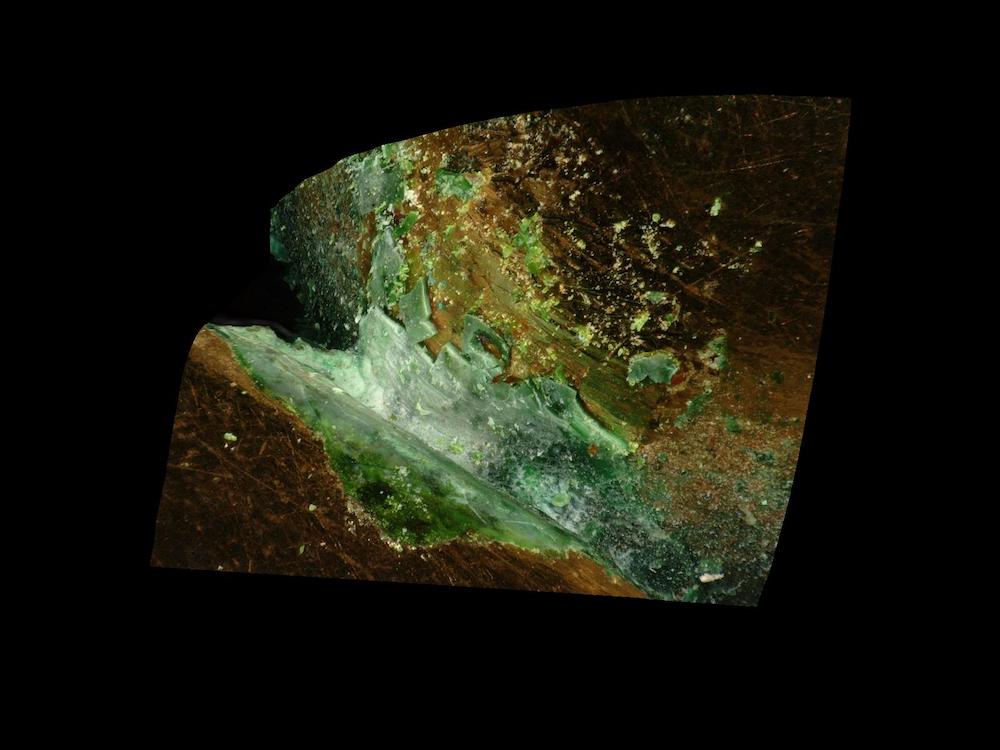TL;DR
Find out what goes on in the Conservation Science Laboratory at the Heritage Conservation Centre (HCC) in an exclusive interview with Singapore’s only conservation scientists, Lynn (L) and Xu Mei (XM). Get a behind-the-scenes rundown of how artworks and artefacts are investigated and subsequently restored, and even learn about the perks of being in this niche yet collaborative field of work.
What is Conservation Science?
Everyone knows that artworks and artefacts need plenty of care, and at times restoration, especially for the ancient and historical pieces. It is easy to label conservators and curators as being at the forefront of this restorative projects.
Conservation Science, on the other hand, looks to investigate the material aspects of these artworks and artefacts. Using advanced analytical technology, conservation scientists investigate the provenance, materials and techniques, as well as determine the original appearance of these works under careful treatment. Their investigations come in tandem with others from the curatorial and conservation departments of the HCC.
Q&A
How did we enter the field of Conservation Science?
L:
In 2009, I started out as an assistant conservator of paintings. Subsequently, I developed an interest in paint cross-sections and the identification of artist’ materials. That led me to an internship at the V&A Conservation Science lab, which broadened my understanding of the benefits conservation science has in the preservation of artworks.
Back then, the HCC did not have a dedicated science department, and that’s when we, a team of conservators and senior managers, embarked on a journey to set up the Conservation Science lab. In 2014, I continued to pursue my interest in the field with a Masters’ research programme specializing in micro-analysis of painted artworks using different instrumentation. That led to an opportunity to understudy a senior conservation scientist at the Indianapolis Museum of Art. Returning to the HCC in 2016, I assist in the equipment and development of the Conservation Science lab.
XM:
Conservation Science was a mid-career switch for me. When I left my first job, last year, doing toxic chemical analysis, I chanced upon a job posting online for the role. I had never heard of Conservation Science, or the idea of Conservation, before joining the HCC! I was on the lookout for a stimulating career that could broaden my perspectives, and Conservation Science has proven to be a perfect fit. My initial impression of the role was the simple material analysis of artwork, but I soon came to realise that the possibility of questions arising from working with these artworks and artefacts are endless.
Here's what a typical day at work is like.
XM:
We answer questions. Plenty of them. As artefact analysis is at the core of what we do, typical questions we usually get from conservators and curators are ‘What is this object made of?’ or ‘What is this abnormality that we see or smell?’.
To break it down, conservators ask questions about artefacts in order to inform on conservation treatment decisions, such as choice of solvents to use, while curators’ questions are meant to supplement knowledge of the artefacts, such as place and period of an object’s origin, which can be shared in display panels or brochures.
How do we find the answers to these questions? Usually, we need to get samples from the objects, and analyse them on the lab’s instruments. Sometimes, the samples can be so tiny, that they can’t be seen with the naked eye. The entire process of extracting the samples, preparing them for analysis, running the analysis on instruments (yes, multiple instruments!), then interpreting the results can take days to weeks, depending on the complexity of the question and object.
What makes it even more challenging is that these samples are very limited, sometimes only giving us one shot at an analysis. The work we do is never routine, as we may be looking at textiles one day, and ceramics the next.
Besides the direct analysis of objects, Conservation Science is also concerned with detecting chemical gases in the environment that surround artefacts on display or in storage. Some gases do cause artefacts to degrade, and have to be removed or reduced if detected. Hence, materials such as showcase boards, mannequin fabrics and even the paint on the walls are tested for off-gassing before use.
L:
Xu Mei pretty much summed it up. Just to add on, our work does not keep us in the lab all of the time. To help confirm our analytical results, you may find us outside the HCC looking for reference materials like poison tree sap, chicken blood, peach gum, and more. In fact, we look to explore new techniques on the market that can be applied to artworks or visiting museums and stores for in-situ analysis, meaning we get to learn new things almost every day.
So, what have we been up to lately?
L:
Often, having a conversation with like-minded colleagues do lead to collaborations and interesting surprises. Recently, a case on fading pink dye was raised in one such exchange, involving various fabrics in our Peranakan textile collection. It was observed that even in minimal light exposure, such as within the museum, the pink fabrics would still show noticeable fading after a few months. That got us curious about the dye used in this collection, since they all showed the same fading trend. Through non-invasive examinations, we narrowed the possibility to an early synthetic dye called eosin (the result has not been concluded at the time of this interview). This same dye can also be found in Van Gogh’s paintings, and is well-known to fade extremely quickly.
XM:
As for me, the most interesting question would be in reference to a hair queue (style of pulling back hair into a braided tail, worn by Manchu Chinese men) worn by a male subject during the Qing dynasty. Was the hair from a human or an animal? At first, I felt like the answer to the curator’s question seemed out of reach. Upon further research, the origin of this hair was deduced simply by observing the fine structures of a single strand of hair under a high magnification microscope – an established forensic technique. Interestingly, we compared the sample to hairs from different animals and even some from our generous colleagues, and thus, it was concluded that the hair queue was of human origin.
There are times when we get stuck. But there’s always a solution to a problem. Here’s how we deal with it:
L:
Since the variety of materials in our National Collection is so huge, there are times when I can’t answer the questions posed to me. As a conservation scientist, I am not exactly an expert in all materials and techniques. That’s when I may need to consult a conservator, someone who has years of practical experience dealing with a certain type of object, or a curator who knows the history of the object best. Sometimes, we even look to a conservation scientist in another country, who may have worked on a similar problem.
Although well-equipped, there are times when we approach our vendors and local universities for technical help. Personally, I have encountered analysis cases that remain unsolved for years, but with technique and technological improvements on the market, have managed to recently revisit them. If in doubt, just keep on trying.
XM:
Agreed! Among the most difficult questions I’ve encountered are those relating to how degradation products are formed on objects over the course of time, which can go back to hundreds of years. Understanding the degradation process will help to prevent similar occurrences in the future, which helps current day artists make better informed choices of the materials to use. In addition, the objects studied may have been exposed to complex environments, such as undersea or caves. All these complicate the degradation process and make it hard to pinpoint the contributing factors or replicate the process for study.
Do we actually understand the art we are analysing?
XM:
To a certain extent, yes. Coming from a purely science background, having zero knowledge of art history proved to be a setback, as the lack of understanding I had for the artwork did affect my analysis. It is important to understand the materials and techniques available during the time period or the preferred choice of materials and style used by the artist, as that would help narrow down the list of possible suspects greatly.
Gaining information on where the object has been located and how it was used will also provide much insight for analysis. This requires in-depth research on the history of the specific object, which can comprise on-site overseas studies and interviews with artists (or their relatives) and art sellers.
Are there any unique challenges in our work?
XM:
Yes, analysis of samples are delicate issues, as artworks are precious and one-of-a-kind. When we draw a sample, we take only micro-amounts (a few dust-like particles or a single fibre), as we want to be as non-invasive as possible to the artefact or artwork. However, these samples are further complicated by the mixing of different materials, ageing and degradation.
Furthermore, there is a lack of references for identification as materials used to create the object may no longer be available or were self-concocted by the artists. Besides technical difficulties, it is also important for us to have clear communication with our colleagues from the various fields, in order to facilitate a two-way exchange of such niche information.
What else inspires us to do this work?
L:
Every question we answer, or ‘mystery’ we solve, brings us closer to the truth. Much like detective work.
XM:
We get to reveal untold secrets, and verify information about ancient artefacts, which enables us to gain a deeper understanding and appreciation of history, art and culture. Conservation Science also contributes to the conservation of damaged artefacts, preservation of the authenticity of artefacts, and most importantly, ensuring they are passed down to future generations as accurately as possible. This is what inspires me to do better work. It may be a relatively new field, with many novel and exciting applications being explored at such a rapid rate, it’s truly inspirational on both the scientific and arts front.
Help us raise awareness for art conservation and the science behind it!
L:
9 in 10, or sometimes even 10 out of 10, people who visit the HCC may say it is their first visit, and more surprising, that they did not know heritage conservation exists in Singapore! Half of them admit to understanding or have come across art conservation, but probably none have heard of conservation science. In recent years though, there have been more people who have come to know about our work, through our continued efforts to share and collaborate with others.
XM:
Yes, those numbers do not lie! Every time I tell people what I do, the first response I get is ‘So, you authenticate stuff?’ I will then re-emphasize that our analyses are meant to understand the artefacts better for conservation purposes, not to authenticate the artefacts.
If I were not a part of the HCC, I would not have known that such roles existed in Singapore. So, I do believe that more can be done to spread public awareness on what we do here, which is what our communications department at NHB has been actively doing.
To date, we have upped our digital presence with outreach videos on social media, and written articles (much like this one!) on our website. Most recently, ‘An Old New World’ exhibition at the National Museum of Singapore featured sections on Conservation and Conservation Science in their brochure. We have a very open office environment and conduct lab tours for the public, where they can see us, and the conservators alike, in action. For any students reading this, we do host internships to develop interest and potential in our field.




